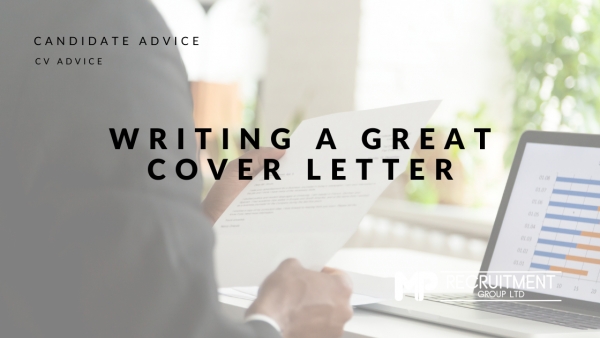WRITING A GREAT COVER LETTER

Behind every good CV is a good cover letter. Quite often employers won’t ask for a cover letter, but you should see it as an essential part of your job application. The cover letter gives you a chance to sell your skills and experiences to recruiters in much more detail than you can on a CV.
A cover letter is not a continuation of your CV, it’s a tool to say why you want this role and why you will be suitable. It gives you much more opportunity to explain your skills in detail and give your reason as to why you think you are the one that should be hired for this role.
DO YOUR RESEARCH
While your CV should be tailored to the type of role you’re applying for, the cover letter should be even more tailored towards the position and the company you are applying for. Take some time to look into the role and the company and use this information to write your cover letter accordingly. Things you should research include what the company does and who their target audience are, what the role involves, and what particular skills are key to the position.
FORMATTING YOUR COVER LETTER
Your cover letter should be well-written and well-presented, as well as being concise and to the point. It should be no more than one side of A4 paper but should cover all the points that you want to get across to your prospective employer. Use an easy to read font like Calibri, and no unnecessary quirks such as word art.
ADDRESSING THE COVER LETTER
Cover letters will usually be addressed to the person dealing with the applications. This will often be shown on the job advert, but if not, don’t be afraid to try and find out. You can start by visiting the company’s website to track down the name of the relevant person. If that doesn’t help, simply calling and asking will do no harm at all. If you do this, you will not only address the letter the to the correct person, but also you will have demonstrated some initiative and genuine interest in the role. If you’ve been unable to track down the relevant person, then simply ‘Dear Sir/Madam’ will suffice.
STRUCTURING
There isn’t a set structure for a cover letter so you shouldn’t get too hung up on how to write it. The most important thing is that you get your message across to the hirer. The letter should flow well and be well-written so that it impresses the recruiter. Say a little about your background, and address employment gaps. Find an example of an experience that has motivated you to want to pursue this role. Can you use any numbers or statistics from your past work? Most importantly, throughout the cover letter, try to bring across some of your personality. Ask yourself what you can put in it to make it stand out from the other applicants.
CLOSING THE COVER LETTER
Close your letter with a final statement to reiterate why you are applying and why you think they should choose you for an interview. You should sign off your letter with ‘Yours sincerely’ if you know the recruiter, or ‘Yours faithfully’ if you don’t, followed by your name below.





